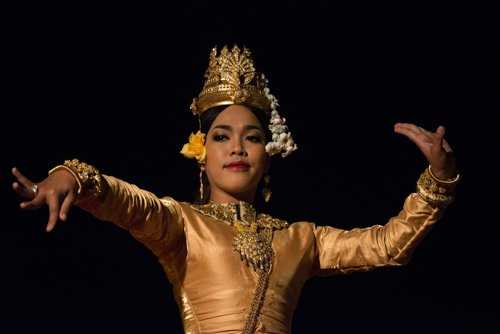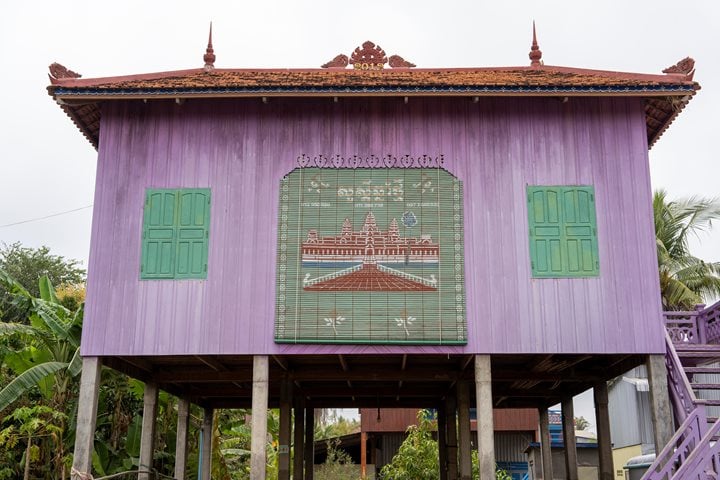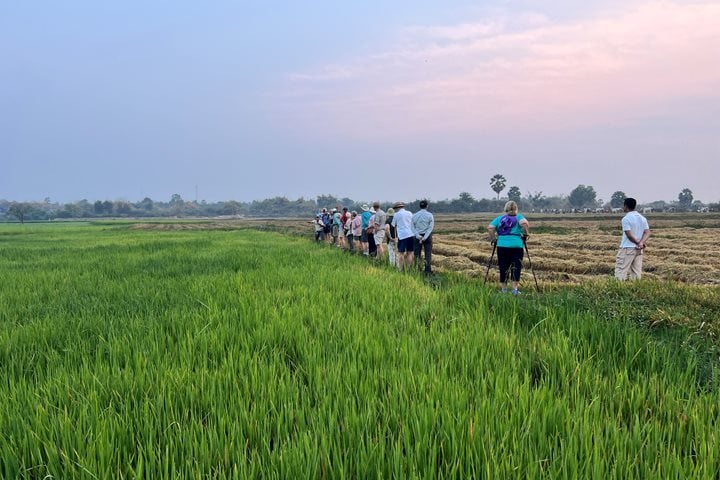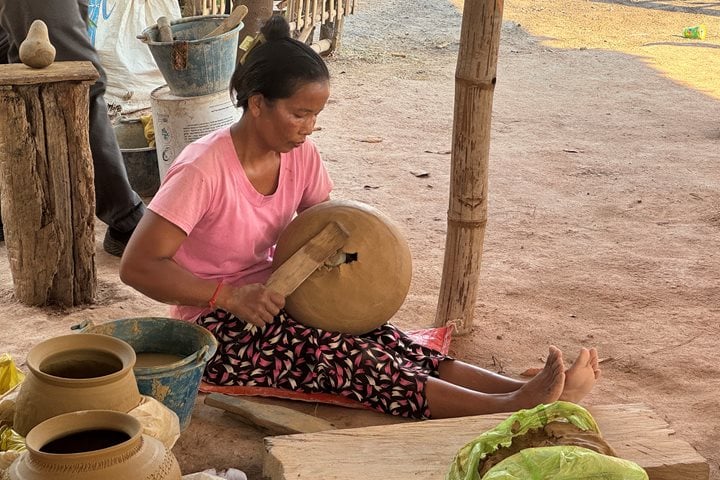Last night we docked upstream from the capital, Phnom Penh, its lights visible in the distance. This morning just before breakfast, Jahan moved downriver to dock near Wat Phnom, the small hill which gives the city its name. This full day visit will move us from royal history at the
The impressive audience hall, used for state visits, is located in the main courtyard. The second courtyard, surrounded by detailed wall murals depicting the Ramayana, holds various royal stupa. The main structure is the Silver Pagoda, so named because of the silver floor tiles. It houses many Buddhist and other ritual objects. One of the royal stupa holds the ashes of both Princess Kantha Bhopa, and of her father, King Sihanouk, who passed away in 2012. The guided visit to the 1920’s colonial era National Museum brings us back to the Angkorian period with its fabulous collection of Khmer art. Various 10th century sculptures, which recently were repatriated from well-known U.S. collections and auction houses, are now on display. They originally belonged to the Koh Ker temple complex, and had been looted in the 70s and early 80s.
After lunch at the VIP Topaz Restaurant, we learned about the harsh realities of the Khmer Rouge period of terror from April 1975 to January 1979. At Tuol Sleng, a former high school compound used as interrogation and torture centre, one survivor bears witness to the thousands who were killed. In 2009, the Tuol Sleng Genocide Museum archive was inscribed on the UNESCO Memory of the World Register, which also includes Anne Frank’s diary.
Next on the program was a visit to Choeng Ek, one of the hundreds of “Killing Fields” still haunting after forty years ago. The scull tower, a monument to the tens of thousands, who lost their of lives, is a place for remembrance.
Another option was a visit to Tabitha, a rural support program, which was started 20 years ago by Canadian Janne Ritskes. The successful savings program has helped to create a basic living standard, dignity, and independence for thousands of families. Janne’s current focus is on building a hospital for women, scheduled to open in 2017.
Back on the Jahan, we enjoyed a delicious BBQ buffet on deck followed by a performance of a dance troupe, part of the Cambodian Living Arts organization, accompanied by a small orchestra with a male singer. The Blessing and Golden Mermaid dance represent the serene and traditional classical ballet, while the coconut and clown dance are humoristic folk dances. Photo instructor Emily had given us tips in advance on how to get a good composition: shoot a lot and move around. Our guides Rithy and Tea bade us farewell, thanking us for visiting their country. We miss them already.







